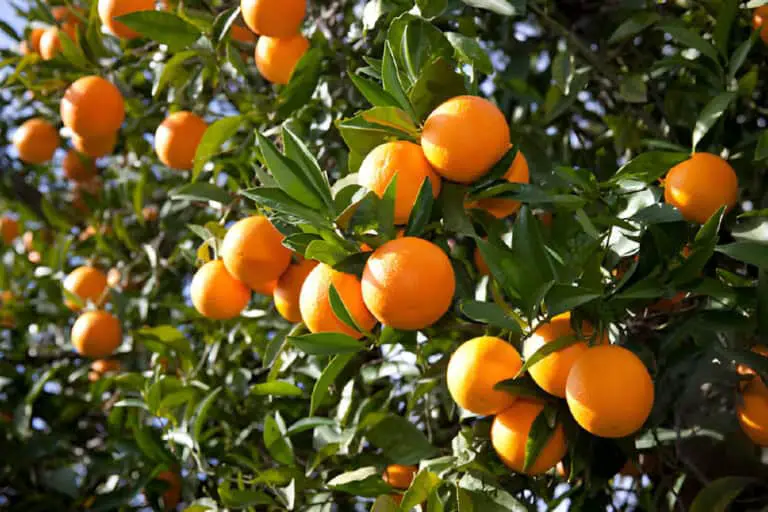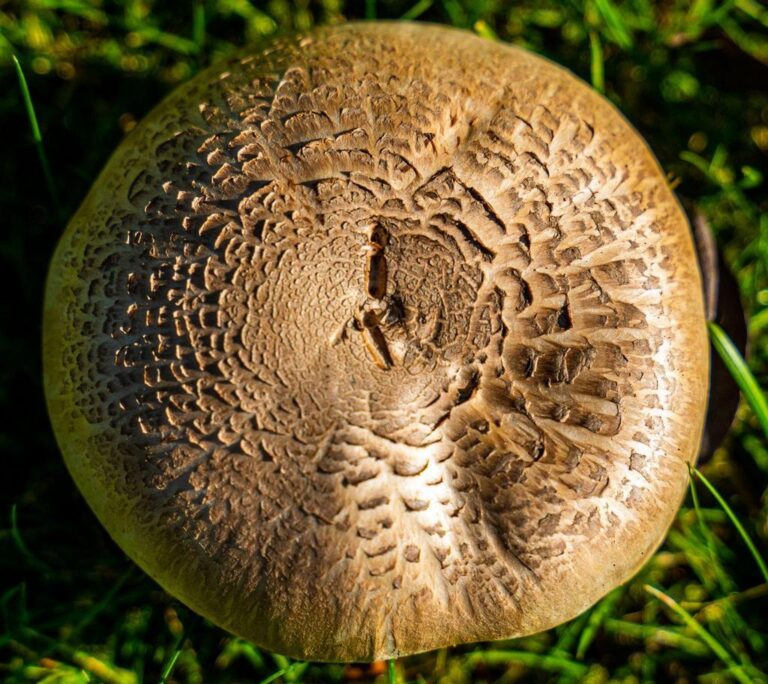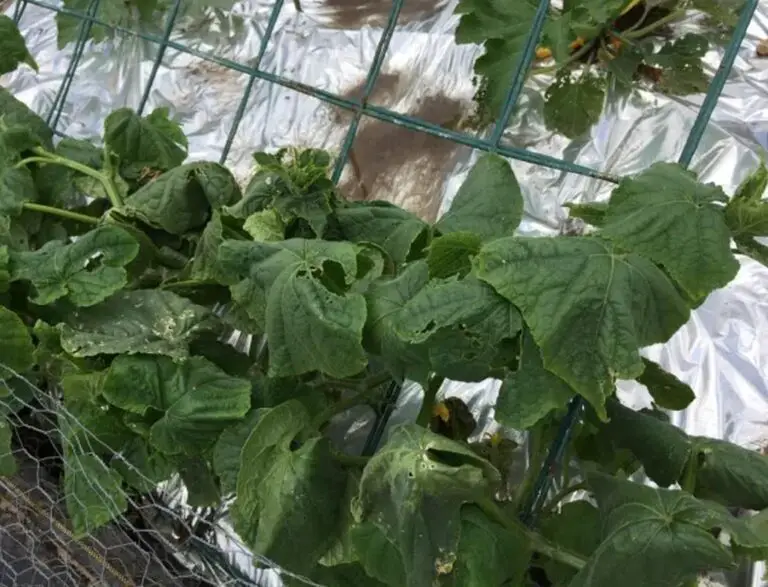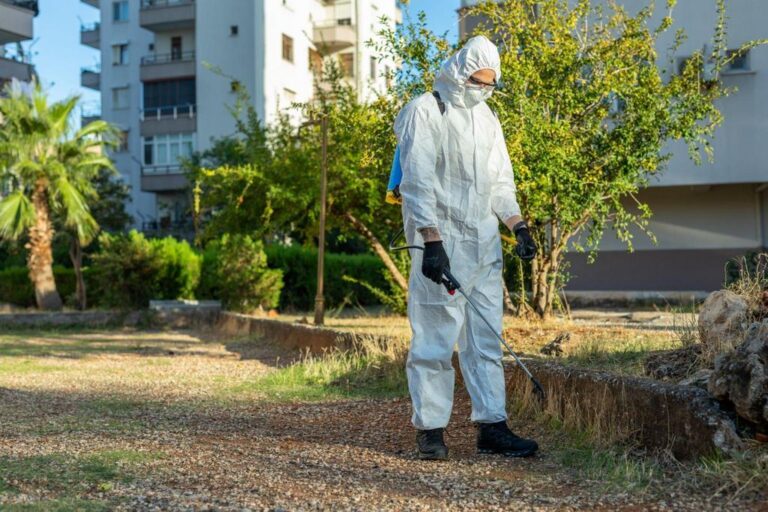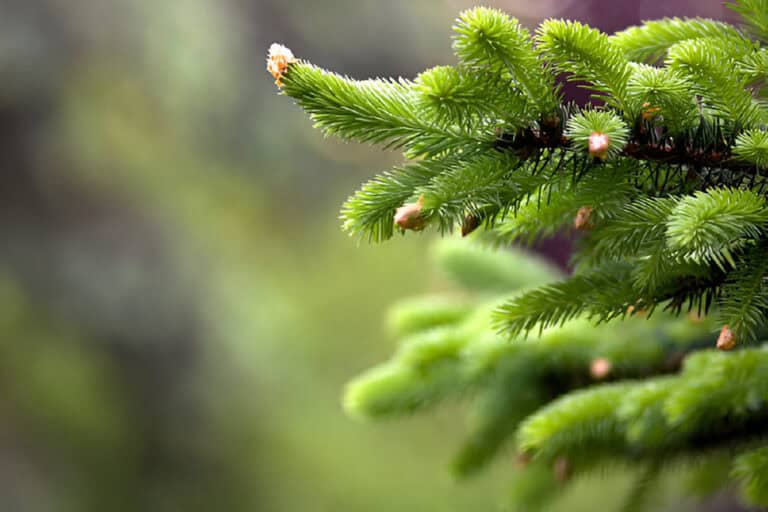Cantaloupe Leaves Curling Up: Here’s Why and How to Fix Them

You’ve been taking good care of your cantaloupe plants, but now their leaves are curling up for no reason. It can be frustrating to put so much effort into growing your own produce, only to have it affected by an issue that seems out of your control.
But fear not, as we’re here to shed some light on why your cantaloupe leaves are curling up and what you can do to fix the problem.
There are a number of reasons why cantaloupe leaves may curl up, from herbicide damage to viral infections. Each possible cause has its own set of symptoms and ways to deal with them, so it’s important to figure out what’s going on in order to fix the problem effectively.
In this article, we’ll talk about the different things that can cause cantaloupe leaves to curl up and give you tips and strategies to fix each one.
We hope that the information we give will help you keep your cantaloupe plants healthy and growing, no matter how long you’ve been gardening or how new you are to growing your own food.
Why Cantaloupe Leaves Curling Up
There are several reasons why cantaloupe leaves may curl up, and it can be a cause for concern for gardeners and farmers alike. Cantaloupe leaves are very important to the process of photosynthesis, which is how plants turn light energy into sugars that they use to grow and get bigger.
If the leaves of your cantaloupe plants start to curl up, it could be an indication that something is wrong with your plants
1. Insects
Cantaloupes are a tasty and refreshing summer fruit, but they can have a number of issues. One of these problems is when the leaves start curling up, which can be caused by insect infestations. Aphids, thrips, and whiteflies are common culprits that can cause this issue.
Aphids are small, pear-shaped insects that can come in a variety of colors, including green, yellow, and brown. They use their piercing mouthparts to suck the sap out of the leaves, causing them to curl and become distorted.
Thrips are tiny insects that can be difficult to see with the naked eye. They have narrow bodies and can be brown or black in color. Like aphids, they feed on the sap of the plant, causing the leaves to curl up.
Whiteflies are small, moth-like insects that are often found in large numbers on the undersides of leaves. They also feed on the sap of the plant, which can cause the leaves to curl and turn yellow.
How to Treat and Prevent Insects Causing Cantaloupe Leaves Curling Up
If you notice that the leaves of your cantaloupe plants are curling up, it’s important to take action to address the problem. One option is to use insecticidal soaps or oils, which can be effective at controlling aphids, thrips, and whiteflies.
You can also use sticky traps to help capture the insects and reduce their numbers. In some cases, it may be necessary to use chemical pesticides to control the infestation, but this should be done with caution and only after other methods have been tried.
2. Herbicides
Growing cantaloupes can be a fun and rewarding experience, but it can also be frustrating when things go wrong. One common problem that gardeners face is when their cantaloupe leaves start curling up. While there are a variety of reasons why this can happen, one surprising cause is the use of herbicides.
When you’re spraying for weeds, herbicides can accidentally drift onto or come in contact with desirable plants, causing damage. We’ll take a closer look at how herbicides can cause cantaloupe leaves to curl up.
Herbicides contain active ingredients that are designed to kill weeds, but they can also damage other plants if they come in contact with them. Two common herbicides that can cause cantaloupe leaves to curl up are glyphosate and 2,4-D. Glyphosate is the active ingredient in many popular herbicides, like Roundup.
It works by stopping a plant-growing enzyme from being made. If glyphosate comes in contact with cantaloupe leaves, it can cause them to curl up and become distorted.
Similarly, 2,4-D is another herbicide that can cause cantaloupe leaves to curl up. This herbicide is often used to control broadleaf weeds, and it works by disrupting the canteloupe’s normal growth process. If 2,4-D comes in contact with cantaloupe leaves, it can cause them to curl up and become distorted, as well as cause the leaves to turn yellow and eventually die.
How to Prevent Herbicides Causing Cantaloupe Leaves Curling Up
If you suspect that herbicides are the cause of your cantaloupe leaves curling up, it’s important to stop using herbicides in the affected area. You can try washing the leaves with water to remove any herbicide residue. While it may take some time for your cantaloupe plants to recover, with proper care and attention, they can rebound and produce a healthy crop.
3. Fusarium Wilt (Fusarium oxysporum)
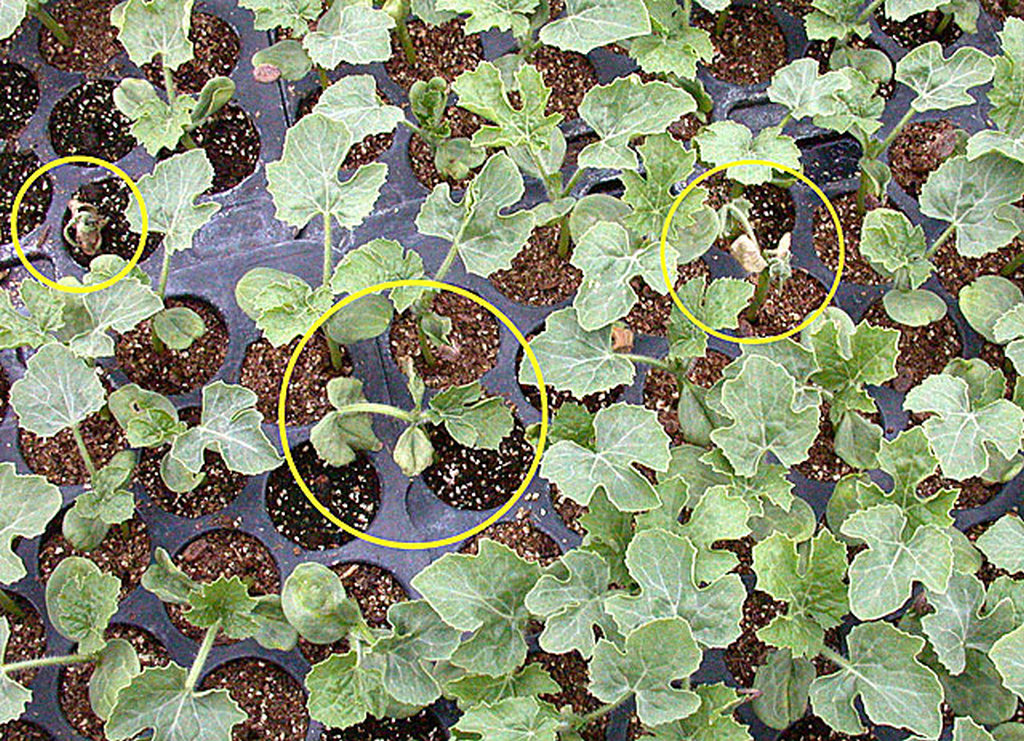
Fusarium wilt is a fungal disease that causes cantaloupe leaves to curl up. The plant’s vascular system gets infected by this disease, which stops water and nutrients from getting from the roots to the leaves.
The first signs of infection include the yellowing and wilting of runners. As the disease progresses, leaves start to curl up, and runners develop brown, sunken lesions that extend from the crown to the tips. Additionally, the plant’s roots and stems develop brown discoloration.
Fusarium fungus grows best in warm, wet soil, which is why diseases tend to spread more when these conditions are present. Fusarium wilt can remain in the soil for a long time, making it difficult to control.
Treatment and Prevention of Fusarium wilt (Fusarium oxysporum)
Preventing the disease from occurring is the best management strategy. You can keep this disease from killing your cantaloupe plants by taking precautions and keeping an eye on them.
- To avoid Fusarium wilt, cantaloupe must be planted in soil that drains well and doesn’t stay wet.
- The soil should also be allowed to dry between waterings.
- Also, planting fungicide-treated seeds and switching crops every four years can make it less likely that diseases will grow.
- Fusarium wilt is a dangerous disease that can be hard to stop once it has spread through the soil. If infected plants are found, they should be taken out of the ground and destroyed to stop the disease from spreading.
4. Southern blight — Stem and fruit rot— (Sclerotium rolfsii)
Cantaloupe plants are popular with gardeners, but their leaves can curl up sometimes. Southern blight, a disease caused by the fungus Sclerotium rolfsii, could be one reason why cantaloupe leaves curl up. This disease can cause leaves to suddenly wilt, leaves to turn yellow, and stems above and below the soil to turn brown. A fan-shaped mycelial mat may also cover the stem..
The fungus that causes southern blight can live in the soil for a long time, and high temperatures, high humidity, and acidic soil help the disease spread. Most cases of this disease happen in tropical and subtropical areas, like the south of the United States. To stop this disease from spreading, it is important to keep an eye on the weather and the pH of the soil.
How to Manage Southern blight (Stem and fruit rot)
There are several management techniques that can be used to control southern blight. These include getting rid of infected plants, making sure plants aren’t too close together to improve air flow, rotating crops with plants that are less likely to get sick, and plowing crop debris deep into the soil.
Also, it can help keep the plant from getting sick by wrapping the lower stems with aluminum foil, making sure to cover the part of the stem that is below the ground and about 2-3 inches above the soil line.
Gardeners can keep their cantaloupe plants healthy and reduce the chance of southern blight by using these management techniques.
5. Alternaria leaf blight (Alternaria cucumerina)
Cantaloupe plants are vulnerable to several diseases that can cause their leaves to curl up, and one of the most common is Alternaria leaf blight, caused by the fungus Alternaria cucumerina.
The symptoms of Alternaria leaf blight include small, yellow-brown spots leaves with yellow or green haloes that appear on the oldest leaves of the plant. As the disease gets worse, the lesions get bigger and turn into large necrotic patches, which often have a ring-like pattern. If left untreated, the leaves curl up and eventually die.
The fungus responsible for Alternaria leaf blight thrives in areas where temperatures are high, and rainfall is frequent, making it a prevalent disease in growing areas.
Treatment and Prevention for Alternaria leaf blight (Alternaria cucumerina)
Farmers should rotate their cucurbit crops with another crop every two years to lower the number of inoculum and control this disease. After harvest, crop debris should be removed from the field as quickly as possible or plowed deeply into the soil to prevent the fungus from spreading. Additionally, appropriate protective fungicides can help slow the development of the disease.
Farmers should water plants from the bottom, not from above, to keep the leaves from getting wet, which helps diseases grow and spread. This method of management reduces the amount of time that leaves are wet and slows the spread of the disease.
Alternaria leaf blight can cause big drops in yield, so it’s important to find it and treat it quickly to keep plants healthy and increase the harvest.
6. Cucumber mosaic (Cucumber mosaic virus (CMV))
Cucumber mosaic virus (CMV) is a viral disease that can cause cantaloupe leaves to curl up. CMV causes the plant to grow very short, have yellow spots on its leaves, and curl its leaves.
The leaves may also be smaller than usual, and the flowers on infected plants may be deformed with green petals. The fruits that grow on a plant that has been infected are small and discolored, which makes them less appealing to eat.
The virus is transmitted by aphids, and it has an extensive host range, which means it can infect many different types of plants. If a tool, like a pair of pruning shears, is contaminated with the virus, it can also be used to spread CMV.
Treatment and Prevention for Cucumber mosaic (Cucumber mosaic virus (CMV))
To manage CMV, controlling the aphid vectors is crucial. Reflective mulch can stop aphids from eating, and mineral oils or insecticidal soaps can be used to stop outbreaks. There are some types of cantaloupe that are resistant to CMV, and planting these types can help stop the virus from spreading.
It is important to note that there is no cure for CMV, and once a plant is infected, it will remain infected for the rest of its life. The best way to stop the virus from spreading is to keep the garden clean. For example, clean tools before using them and get rid of infected plants. By taking these steps, gardeners can help protect their cantaloupe plants from CMV and other viral diseases that can cause leaves to curl up.
Conclusion
As we have seen, there are several possible reasons why cantaloupe leaves may curl up, from insect infestations to fungal diseases. To figure out what to do, it’s important to know the exact cause.
To prevent or lessen the effects of problems, it is important to keep plants healthy and well-kept. An important first step in preventing leaf curl is to make sure that plants are not stressed by things like too much water or too much fertilizer.
Fungal diseases like Fusarium wilt and Alternaria leaf blight can also be less harmful if proper management practices are used. These include crop rotation and the use of fungicides. And addressing insect infestations early on can help prevent further damage.
By keeping an eye out for problems and acting quickly to fix them, gardeners can help make sure their cantaloupe plants stay healthy and produce a lot of tasty, juicy fruit.

